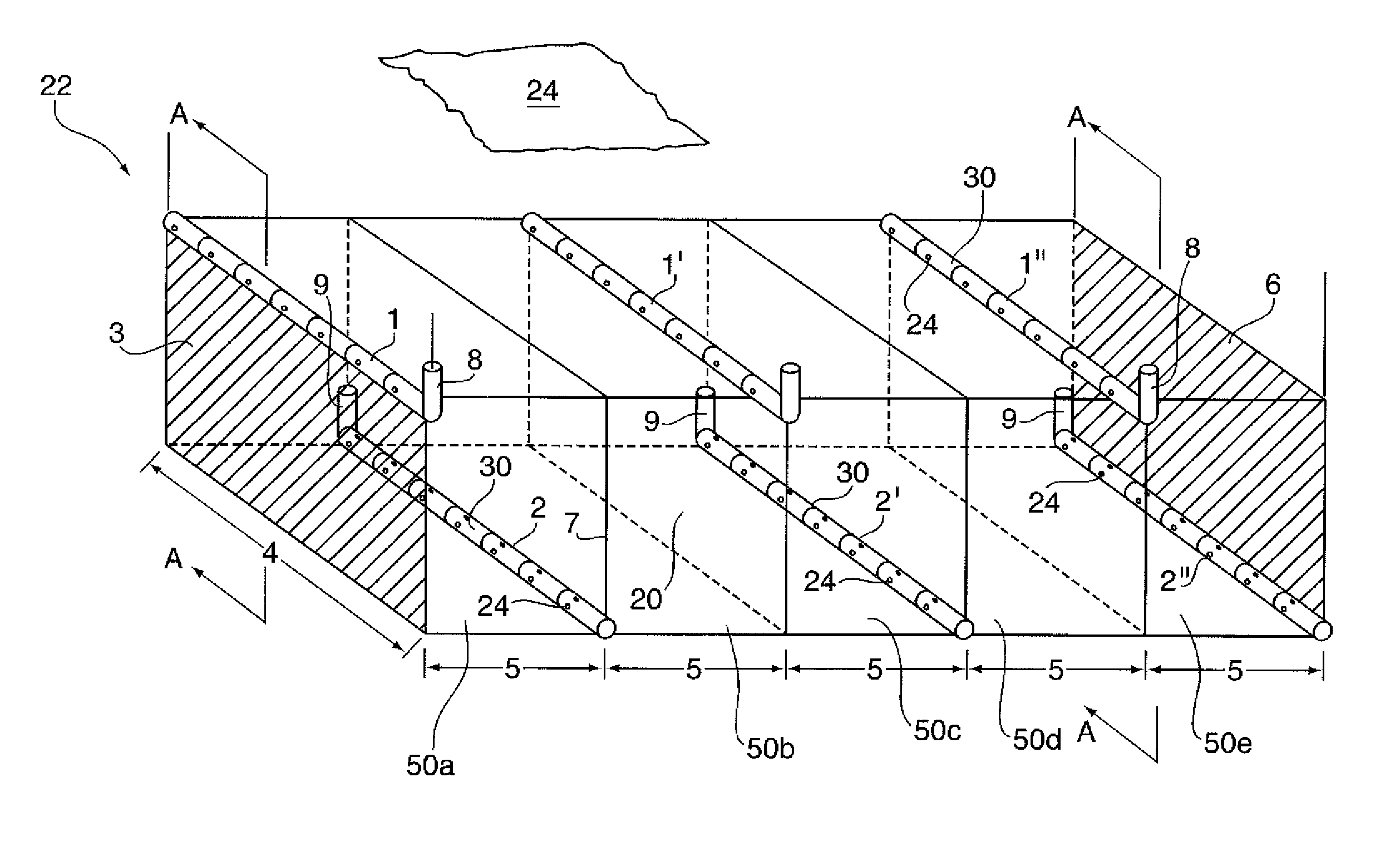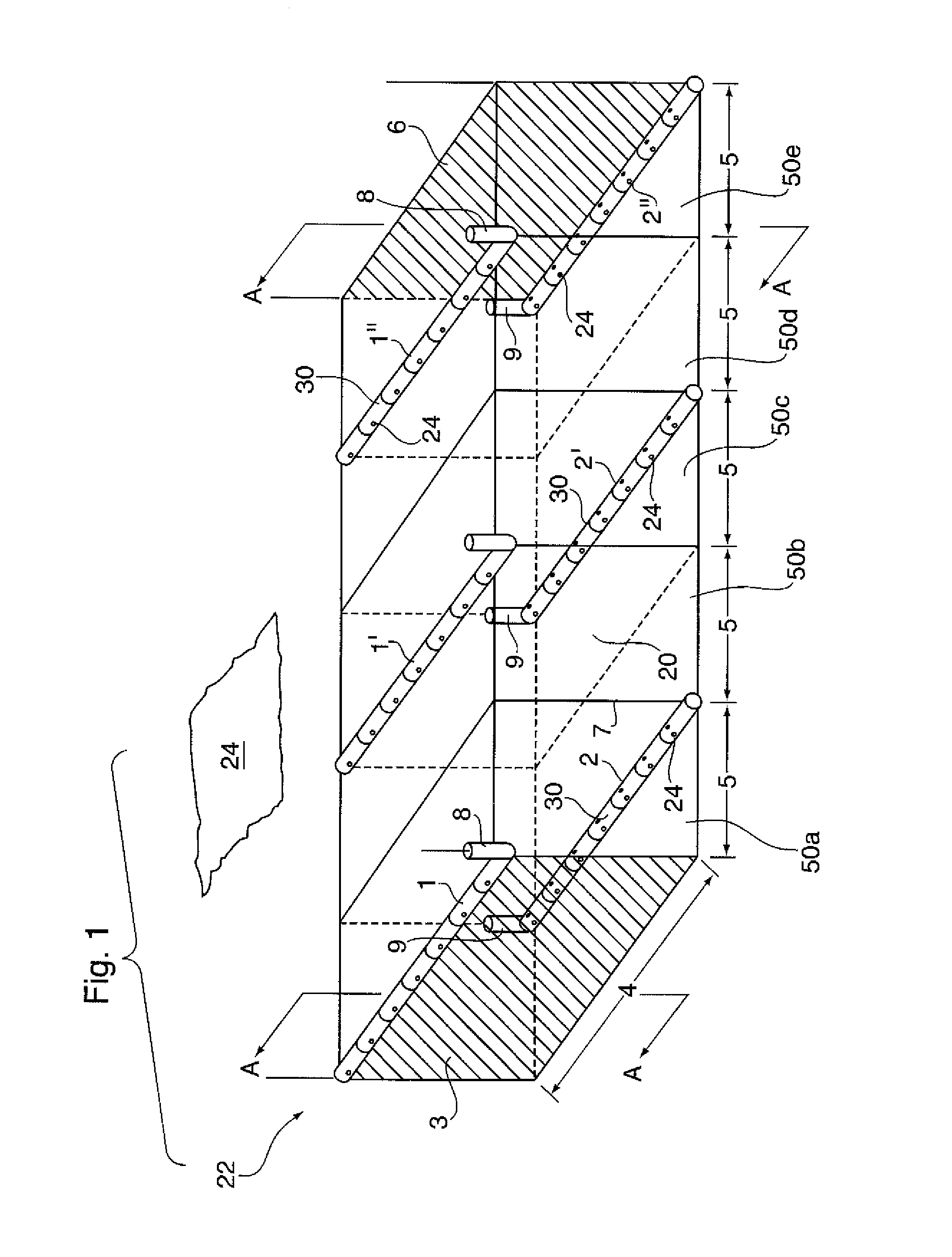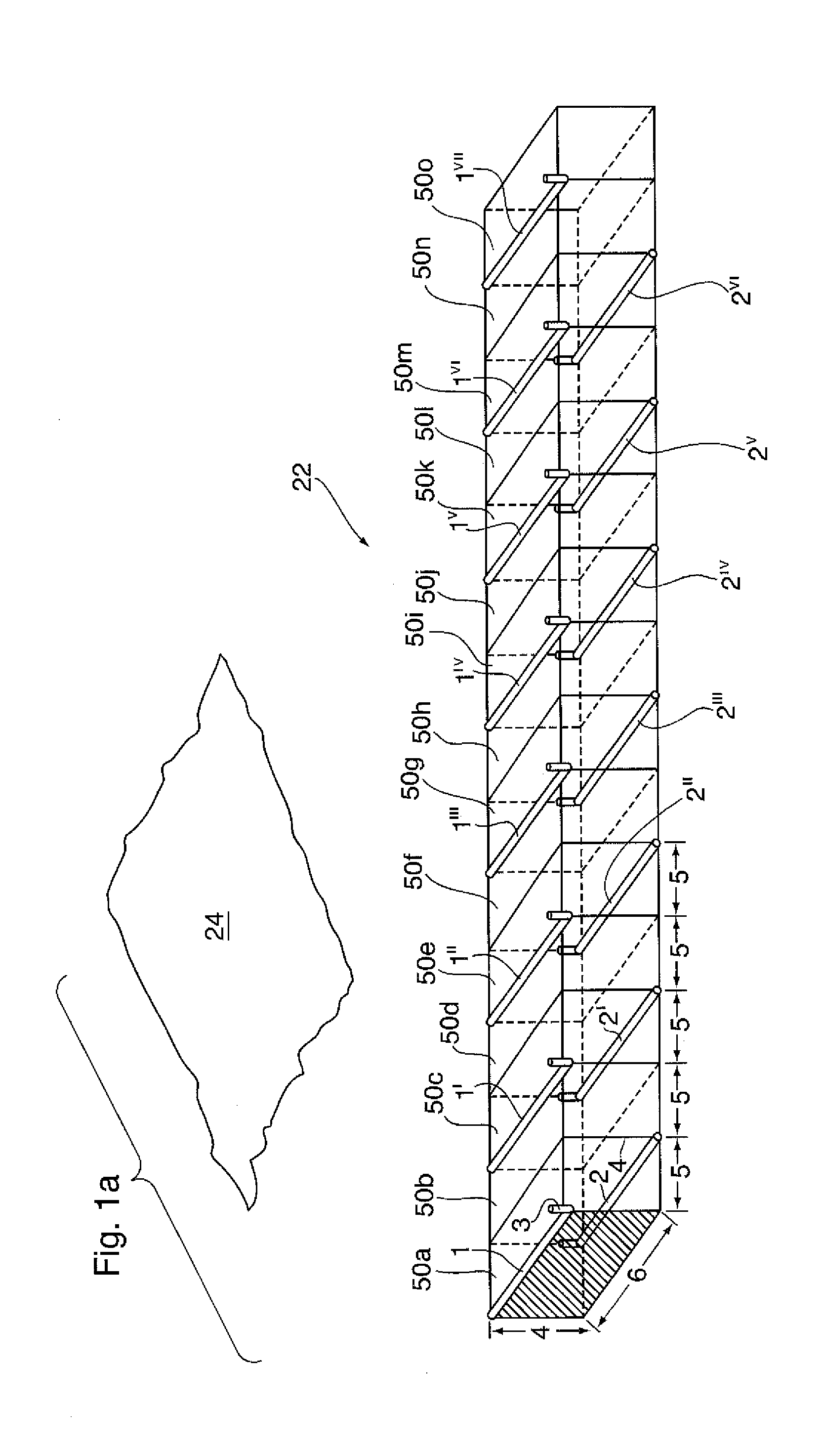Horizontal well line-drive oil recovery process
a technology of horizontal wells and oil recovery, applied in the direction of fluid removal, earth-moving drilling, borehole/well accessories, etc., can solve the problems of insufficient steam generation at the surface, inability to produce fresh water, and inability to meet the needs of oil recovery, so as to achieve uniform gas delivery, effective free oil trapped, and uniform oil collection
- Summary
- Abstract
- Description
- Claims
- Application Information
AI Technical Summary
Benefits of technology
Problems solved by technology
Method used
Image
Examples
example 1
Staggered Well Configuration
[0110]For the Staggered Well configuration, the oil containing portion 20 of reservoir 22 comprising grid blocks 50a-50o shown in FIG. 1A was s divided into three equal parts, each consisting of five grid blocks 50a-e, 50f-j, and 50k-o, as shown in FIG. 1. Each equal part was successively exploited in three separate but successive phases, each phase taking 5 years, using the wells in FIG. 1 over a 15-year period. The total reservoir volume exploited over the 15-years process life is 1,500,000 m3.
[0111]For the Staggered Well Pattern shown in FIG. 1, a first part of the three part modelling used 2.5 injection wells 1, 1′, and 1″, and 2.5 production wells 2, 2′, and 2″, all simultaneously drilled, for a total of five wells. The reservoir thickness 4 was 20 m and the well offset was 50 m for each grid block 50a-50o. Air injection rates were 10,000 m3 / d for well 1 and 20,000 m3 / d for each of injectors 1′ and 1″, for a total of 50,000 m3 / d for the pattern.
[0112...
example 2
HWLD Well Configuration
[0113]For the HWLD process which was modelled using computer simulation, and as shown in FIG. 4b, in a first phase (FIG. 4b(i)] a horizontal injector well 1 is located high in the formation, and a horizontal well 2 located low in the reservoir 22 is provided, both being placed along one side of the oil containing portion 20 of reservoir 22.
[0114]In FIG. 4b and FIG. 11, representing the HWLD process and configuration of the method of the present invention, the well lengths 6 were each 100 m, the reservoir thickness, 4, was 20 m and the well offset was 100 m. The total volume of reservoir produced over the 15-year exploitation period was thus also 1,500,000 m3.
[0115]The air injection rate was 16,667 m3 / d for each of the injectors for a total of 50,000 m3 / d throughout Phase 1.
[0116]In a second phase [FIG. 4b(ii)], after 5-years, the oil production rate per producer fell to 13 m3 / d, which was considered uneconomical, and a second phase [FIG. 4b(ii)] conducted, nam...
PUM
 Login to View More
Login to View More Abstract
Description
Claims
Application Information
 Login to View More
Login to View More - R&D
- Intellectual Property
- Life Sciences
- Materials
- Tech Scout
- Unparalleled Data Quality
- Higher Quality Content
- 60% Fewer Hallucinations
Browse by: Latest US Patents, China's latest patents, Technical Efficacy Thesaurus, Application Domain, Technology Topic, Popular Technical Reports.
© 2025 PatSnap. All rights reserved.Legal|Privacy policy|Modern Slavery Act Transparency Statement|Sitemap|About US| Contact US: help@patsnap.com



